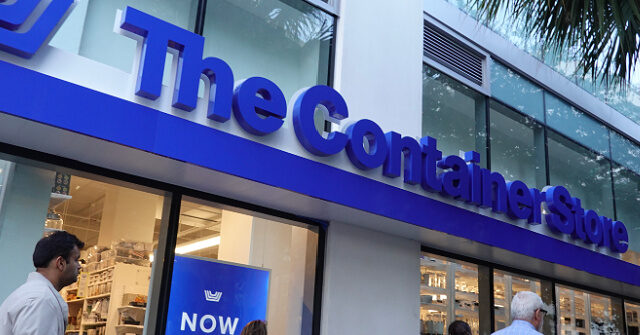The Container Store, a well-known storage and organizational brand, has recently filed for Chapter 11 bankruptcy, joining other major retail chains such as Party City, Big Lots, True Value, and Rite Aid in making similar decisions amid challenging market conditions. With a workforce of 102 stores across the country, The Container Store plans to maintain these operations throughout a 35-day bankruptcy process. In its official filing with the U.S. Securities and Exchange Commission (SEC), the company emphasized that this step is essential for bolstering its financial standing, implementing growth strategies, and ultimately achieving long-term profitability. This move highlights the ongoing struggles faced by many retailers trying to navigate the evolving retail landscape.
Founded in Texas in 1978, The Container Store has built its brand around innovative storage solutions and organizational products. However, its recent bankruptcy filing reveals a troubling financial position, as the company carries approximately $230 million in debt and merely $11.8 million in cash reserves. To support its operations during this transition, The Container Store has secured $40 million in new financing, which it intends to utilize to stabilize its finances and fund growth initiatives. This financial backing is critical as it hopes to enhance its ability to weather the storm and build a robust future.
The announcement of The Container Store’s bankruptcy follows concerning news from Party City, which has announced a complete closure of its locations set for February 2025. Party City had previously filed for bankruptcy in January 2023 but emerged from it by September of the same year. However, Party City’s CEO, Barry Litwin, communicated to stakeholders during a video call that despite various efforts to avert this outcome, the decision to wind down operations was deemed necessary. This unfortunate trend is emblematic of significant pressures faced by retailers, particularly those in the party supply and decor sectors, where competition and changing consumer preferences pose considerable challenges.
Big Lots, another discount retailer facing grave difficulties, has also initiated plans to close all its stores after filing for bankruptcy. The company has already shuttered over 400 locations this year as it attempts to manage its financial burdens. Similarly, True Value, a major hardware supplier with both national and international reach, sought protection under Chapter 11 in October and has decided to sell its operations to rival Do it Best Corp. True Value’s CEO Chris Kempa articulated that after thoroughly exploring various strategic options, they found that a sale was necessary to maximize value for their stakeholders and partners. This narrative of consolidation reflects broader trends in the retail sector, where adaptability and financial sustainability have become increasingly essential.
Rite Aid, a pharmacy and convenience store chain, is another retail entity that has faced significant restructuring amid challenging economic conditions. Following its Chapter 11 bankruptcy filing in October 2023, Rite Aid’s store count dwindled dramatically from 2,000 locations down to around 1,100 by August 2024. This rapid decline illustrates the severe changes that retail chains must endure amidst fluctuating consumer demands, market pressures, and complex logistical challenges. Each of these cases underscores a crucial point: traditional retail is facing an existential crisis that demands creative solutions and a reevaluation of business models.
This string of bankruptcies raises questions about the resilience of these companies and the overall health of the retail sector. As consumer habits evolve post-pandemic, retailers are finding it increasingly difficult to maintain profitability amidst rising operational costs, shifts in consumer spending, and increased competition from e-commerce platforms. The Container Store’s move to pursue bankruptcy protection, along with the fates of Party City, Big Lots, True Value, and Rite Aid, signifies a critical juncture for the industry. Companies must develop innovative strategies to adjust to these turbulent market conditions, ensuring their long-term survival and relevance in a rapidly changing economic environment. Ultimately, only those retailers willing to adapt and transform will likely navigate these challenges successfully.

